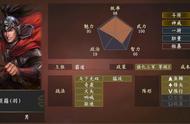5
非谓语动词的主动形式表被动意义
在某些句型中可用动名词和不定式的主动形式表被动意义。
⒈ 在need,want,require,bear等词的后面,动名词用主动形式表示被动意义,其含义相当于动词不定式的被动形式。
如:The house needs repairing(to be repaired).这房子需要修理。
⒉ 形容词worth后面跟动名词的主动形式表示被动含义,但不能跟动词不定式;而worthy后面跟动词不定式的被动形式。
如:The picture-book is well worth reading.(=The picture-book is very worthy to be read.)
⒊ 动词不定式在名词后面作定语,不定式和名词之间有动宾关系时,又和句中另一名词或代词构成主谓关系,不定式的主动形式表示被动含义。
如:I have a lot of things to do this afternoon.(to do与things是动宾关系,与I 是主谓关系。)
⒋ 在某些“形容词 不定式”做表语或宾语补足语的结构中,句子的主语或宾语又是动词不定式的逻辑宾语时,这时常用不定式的主动形式表达被动意义。这些形容词有 nice,easy,fit,hard,difficult,important,impossible,pleasant,interesting等。
如:This problem is difficult to work out.(可看作to work out 省略了for me).
⒌ 在too…to…结构中,不定式前面可加逻辑主语,所以应用主动形式表示被动意义。
如:This book is too expensive (for me)to buy.
⒍ 在there be…句型中,当动词不定式修饰名词作定语时,不定式用主动形式作定语,重点在人,用被动形式作定语,重点在物。
如:There is no time to lose(to be lost).(用to lose 可看成for us to lose;用to be lost,谁lost time不明确。)
⒎ 在be to do结构中的一些不定式通常应用主动表主动,被动表被动。然而,由于古英语的影响,下列动词rent,blame,let等仍用不定式的主动形式表示被动意义。
例:Who is to blame for starting the fire?
6
介词in,on,under等 名词构成介词短语表被动意义
表示方位的介词与含动作意义的名词合用,含被动之义,其意义相当于该名词相应动词的被动形式,名词前一般不用冠词。
⒈ "under 名词”结构,表示“某事在进行中”
常见的有:
under control(受控制)
under treatment(在治疗中)
under repair(在修理中)
under discussion(在讨论中)
under construction(在施工中)
如:The building is under construction(is being constructed).
⒉ “beyond 名词"结构,“出乎…….胜过……、范围、限度”
常见的有:
beyond belief(令人难以置信)
beyond one's reach(鞭长莫及)
beyond one's control(无法控制)
如:The rumour is beyond belief=cant be believed.
⒊ "above 名词”结构,表示(品质、行为、能力等)超过……高于……"
如:His honest character is above all praise=His honest character cannot be praised enough.
⒋ for 名词“结构,表示“适于……为着……”
如:for sale(出售),for rent(出租)等。
That house is for sale.(=That house is to be sold).
⒌ “n 名词“结构,表示“在…….过程中或范围内“
常见的有:
in print(在印刷中)
in sight在视野范围内)
如:The book is not yet in print(=is not yet printed)
⒍ "on 名词”结构,表示“在从事……中”
常见的有:
on sale(出售)
on show(展出)
on trial(受审)
如:Today some treasures are on show in the museum(=are being showed).
⒎ “out of 名词”结构;表示“超出……之外
常见的有:
out of control(控制不了)
out of sight(超出视线之外)
out of one's reach(够不着)
out of fashion(不流行)
如:The plane was out of control (can't be controlled)。
⒏ "within 名词“结构,“在……内、不超过……"
例:He took two days off within the teacher's permission
7
被动语态与系表结构的区别
当“be 过去分词“作被动语态时表示主语承受的动作;作系表结构时表示主语的特点或所处的状态时,be后面的过去分词是表语,相当于形容词。其区分办法如下:
⒈ 如果强调动作或句中有介词by引导出动作的执行者,该句一般为被动语态,否则为系表结构。
如:The glass is broken(系表结构)
The glass was broken by the boy(被动语态)
⒉ 如果句中有地点、频率或时间状语时,一般为被动语态。
如:The door is locked(系表结构)
The door has already/just been locked(被动语态)
⒊ 被动语态除用于一般时态和完成时态外,还可以用于其他各种时态,而系表结构中的系动词be只有一般时态和完成时态。
如:The machine is being repaired.

★ 动词不定式
1
不定式的构成及变形
动词不定式是由不定式符号to 动词原形构成,在某些情况下to也可省略。
⒈ 不定式的一般式
不定式的一般式表示的动作通常与谓语的动作同时或几乎同时发生,或是在它之后发生。
如:He appears to be very happy.(同时发生)
To catch the train, we'd better hurry to the station by taxi.(to catch the train发生在hurry to the station之后)
⒉ 不定式的进行式
不定式的进行式表示正在进行的或与谓语动词同时发生的动作。
如:It happened to be raining when I got there.
⒊ 不定式的完成式
不定式的完成式表示的动作在谓语表示的动作之前发生。
如:I'm sorry to have lost your key.
⒋ 不定式的完成进行式
不定式的完成进行式表示的动作在谓语之前发生并且一直进行着。
如:He was said to have been living in London for twenty years.
不定式的时态意义:
如:He is said to be studying abroad.(不定式的进行式表示动作正在进行)
He is said to have studied abroad.(不定式的完成式表示动作已经结束)
⒌ 不定式的被动形式
当不定式逻辑上的主语是这个不定式表示的动作的承受者时,不定式一般要用被动形式。不定式的被动形式根据其与谓语动作发生的先后关系,有一般式和完成时两种。
① 一般式 to be done
如:These are the books to be given out to the students.
② 完成式 to have been done
如:The novel is said to have been translated into many languages.
⒍ 不定式的否定形式
不定式的否定形式由not或never加不定式构成。
如:We decided not to go out because of the bad weather. 由于天气不好,我们决定不出去。
注意:谓语动词的否定和不定式的否定不同的意义
如:I did not promise to wake him up. 我没有答应叫醒他。
I promised not to wake him up. 我答应了不叫醒他。
2
不定式句法功能
不定式可以作句子的主语、宾语、宾语补足语、表语、定语、状语等成分。
⒈ 作主语
如:To hear from you is nice.
To be a good teacher is not easy.
不定式作主语时,为了保持句子的平衡,往往以it作形式主语,而不定式置于谓语动词后。
如:It's nice to hear from you.
It's not easy to be a good teacher.
⒉ 作宾语
通常用于afford, agree, aim, arrange, ask, attempt, choose, continue, dare, decide, demand, desire, determine, expect, fail, hate, help, hesitate, hope, intend, learn, long, love, manage, mean, need, offer, plan, prefer, prepare, pretend, promise, prove, refuse, seek, threaten, trouble, wait, want, wish等动词后面。
如:I forgot to lock the door.
Please remember to write to me.
记忆口诀:
三个希望两答应(hope,wish,want,agree,promise)
一个要求莫拒绝(demand,refuse)
设法学会做决定(manage,decide)
不要假装在选择(pretend,choose)
⒊ 作表语
如:My job is to pick up letters.
He seemed to have heard nothing.
⒋ 作定语
在the first, the second, the third, the last等之后通常接不定式作定语。作定语时须放在被修饰的名词之后:
如:He is always the first one to get up.
I have a few words to say on this question.
主动形式表被动含义:
如:I have a book to read.
It is easy to read.
Have you anything to send?
比较:Have you anything to be sent?
She is the last to come.
He is looking for a room to live in.
There is nothing to worry about.
⒌ 作宾补
通常用于advise, allow, ask, beg, cause, challenge, convince, enable, encourage, expect, forbid, force, instruct, invite, order, permit, persuade, recommend, remind, request, require, teach, tell, train, urge, want, warn等词后。
如:He ordered her to leave at once.
He was forced to obey his mother’s order.
⒍ 作状语
不定式作状语时通常表示目的,不定式用作目的状语有两个可能的位置,一是在句首,二是在句末。一般说来,用于句首属于强调性用法,即强调动词的目的。也可用于“be adj. to do”结构中作原因状语。
如:He got up early to catch the first bus.
To finish the task on time, we have to work hard.
I'm happy to hear the news.
I'm surprised to see him here.
only to...往往表示“意想不到”的结果;never to...可以接后续的结果。so...as to..., such... as to..., enough to..., only to...以及too...to...等结构中的不定式也表结果:
如:Her father disappeared, never to be heard again.
I went to the bank only to find it was closed.
3
不定式和现在分词作状语的区别
⒈ 作目的状语。不定式作目的状语,带有很强的目的性,有时可以把(in order) to do置于句首。而现在分词作目的状语时,目的和伴随兼而有之。多放于句末,与主句用逗号隔开。
如:(In order) to ensure success, we must make a complete and through plan.
You should keep it a secret, trying to protect the plan.
⒉ 作结果状语。不定式作结果状语表示意外的结果。现在分词作状语表示自然的结果。
如:He returned home many years later, only to find that everything had changed.(意外的结果)
It rained heavily last night, causing the river to rise.(自然的结果)
⒊ 作独立成分
to be honest, to begin with, to start with, to tell you the truth, to make a long story short
如:To tell you the truth, I told a lie.
To begin/start with, let’s sing a song.
To make a long story short, he succeeded in passing the exam.
4
不定式特殊用法
⒈ 用it作形式主语
动词不定式作主语时,如果主语太长,通常用it作形式主语,将真正的主语——动词不定式后置。
如:For us to learn English well is necessary.
→It is necessary for us to learn English well.
动词不定式作主语时,如果将句子变为疑问句,应使用it作形式主语。
To walk to the station takes twenty minutes.
→Does it take twenty minutes to walk to the station?
⒉ 用it作形式宾语
某些不能修饰人的形容词作宾语补足语时,不能用表示人的词作宾语,应用it作形式宾语,再用动词不定式的复合结构作真正的宾语;这类形容词常用的有necessary, easy, hard, common, possible及impossible等。
如:父亲的猝死,使得他必须辍学。
误:His father’s sudden death made him necessary to leave school.
正:His father’s sudden death made it necessary for him to leave school.
⒊ 动词不定式作定语时是否要介词
动词不定式与被修饰的名词或代词构成动宾关系时,如果动词不定式的动词及不及物动词,或者该动词不定式本身有宾语,其后面应加上与之用法相应的介词。
如:We are looking for a room to live in.
但被修饰的名词为place, time, way等时,则往往省略介词。
如:That’s a nice place to work(in).
⒋ 不定式主动式和被动式作定语区别
动词不定式作定语时,如果其表示的动作为句子的主语发出时,该动词不定式一般用主动式;如果动词不定式表示的动作不是句子的主语发出的,该动词不定式应用被动式。
如:I am going to the shop because I have something to buy.(“buy”这个动作是句子的主语“I”发出的,故用主动式to buy)
I am going to the shop. Do you have anything to be bought? (“buy”这个动作不是句子的主语“you”发出的,故用被动式to be bought)
⒌ “too...to...”结构
① “too 形容词或副词 to do”中的动词不定式表示结果,含有否定的意义,意思是“太……以致不能……”
如:The problem was too complicated for us to solve.
② 但下列结构表示肯定含义。
⑴ 当too前或to前有否定词构成双重否定时:
如:English is not too difficult to learn. (英语并不太难学。)
He is too wise not to see that. (他很聪明,不会不懂这一点。)
⑵ 当too后是glad, pleased, happy, delighted, satisfied, ready, willing, kind, apt, good, true, easy, near, careful, well, early, delicious, eager, anxious等形容词或副词时;与这些词连用时,too前还常加上only, all, but, just, simply等副词,意思不变,因为这些词加上too后与very同义。
如:They are too anxious to leave. (他们急于离开。)
He is too ready to help others. (他总是乐于助人。)
I'm only too glad to see you. (见到你非常高兴)
They are too pleased to hear the news. (他们听到这个消息,非常高兴。)
⑶ 与cannot连用:
如:You cannot be too careful (=You can never be careful enough) to do your homework.
你做作业越仔细越好(=无论怎样仔细也不过分).
不定式在句中作定语或真正的主语时:
There are too many problems to be solved. (有很多问题有待解决。)
⒍ in order to与so as to
动词不定式作目的状语位于句首时,前面可加in order,但不能加so as;动词不定式位于句末,则加in order或so as均可。
如:In order to make money, they did anything.
They set out early in order to/ so as to get to the village before 9.
⒎“疑问词+不定式”结构
“疑问词+不定式”结构中的疑问词,包括疑问代词who,what,which和疑问副词how,when,where等。这些疑问词和不定式一起构成了不定式短语,这种结构可在句子中作主语、宾语、表语等。
如:How to do it is a question. (作主语)
I really don't know what to write about. (作动词宾语)
We must first solve the problem of whom to serve. (作介词宾语)
The question is where to put it. (作表语)
I asked him how to learn English. (作宾语补足语)
⒏ 不定式复合结构
不定式可以与其逻辑主语一起构成不定式复合结构,其形式:“for 名词/人称代词宾格 带to的不定式”。其中的名词或人称代词宾格与不定式构成逻辑上的主谓关系。
如:It is important for us to learn English well.
但当表语表示不定式的逻辑主语的特征属性时要用of,如:good, kind, nice, wise, clever, silly, stupid, foolish, right, wrong, rude, impolite, careless
如:It is very kind of you to help me. = you are kind to help me.
5
不定式符号to省略
⒈ watch, see, notice, observe, look at, hear, listen to, feel, make, let, have后接不定式做宾补时,省略to;但get sb. to do中的to 不能省略。
注意:主动省to的这些句子,变成被动形式时必须加to。
如:I saw him play basketball.
I noticed him come in.
They made me repeat the story.
I was made to repeat the story.
⒉ 当介词but, except, besides之前有一个实义动词do (助动词do及其变化形式除外)时,后面的动词不定式不带to。此外,在can not but/except, can not choose but/except, can not help but/except这三个固定用法中,but/except之后的不定式也不带to。
如:The enemy could not choose but surrender.
I could do nothing except agree to his terms.
Can you do nothing but sell the wedding ring?
⒊ 介词instead of 前后的两个成分要相等。如果前面的成分是不定式,则后面的不定式不带to。
如:He went to play football instead of see a film.
would (had) as soon, had better, had best (不常用) 等之后,不定式省略to。
You had better not smoke.
I’d just as soon come tomorrow.
⒋ 某些惯用法中,than之后的不定式不带to, 如do nothing else than, do more (less) than, do no more than, would (had) sooner than, would rather than等。
如:I would rather not see him.
The old worker often does more than fulfill his quota.
⒌ why引导的省略问句中。口语中,不带to的不定式常在why引导的省略句中作谓语。表示不同意或反驳的意见。
如:Why not give her another chance?
Why bother?
Why not do it yourself?
⒍ make, hear, let, go构成惯用语时,常用省略to不定式。
如:Can't you make do with 10 pounds? 10英磅不可以凑合着用吗?
They let ship the good chance. 他们错过了那次好机会。
The children made believe that they were generals.孩子们假扮成将军。
⒎ 动词go和come之后作状语时省略to:
不定式在动词 go 和 come之后作状语时,在某些情况下总是不带 to。这种用法在祈使句的go 和come之后最常见。在陈述句中也会出现这种用法,但一般在go 和come不发生形态变化的情况下才出现。
如:Go chase yourself!!(走开,别来捣乱!)
Come sit beside me.
You should go thank him.
⒏ 两个或两个以上的不定式并列在一起时,第一个不定式带to,后面的不定式往往把to省去;但表对照时不能省to:
如:I wish to finish my task and (to) get away.
It is better to laugh than to cry.
6
省略动词部分
⒈ 为避免重复,口语中常可省去与前边动词重复的动词原形而留下to。
如:—Would you like to go to the films with me?
—I’d like to.
⒉ 如果不定式to后的结构中含有be, have或have been,通常要保留be, have或have been,但随后的成分仍可省略。
如:—Is your mother a teacher?
—No, but she used to be.
—He hasn’t finished yet.
—Well, he ought to have.
★ 动词的-ing 形式
1
如何区别动名词和现在分词
动名词和现在分词的构成相同,即动词原形ing。那么,在使用的过程中如何区别它们呢?
⒈ 用法不同
动词除具有动词的特征外,还有名词的特征,在句子中可以作主语、表语、宾语、定语等;而现在分词除具有动词的特征外,还具有形容词的特征,在句子中可以作定语、表语、状语、补语等。
⒉ 区分方法:
① 如果-ing形式在句子中作状语和补语,那么它一定是现在分词。
如:She saw Jim playing with the cat.
Having finished his homework,he went out to play.
② 如果-ing形式在句子中作主语、宾语和同位语,那么它一定是动名词。
如:Smoking is harm to your body.
I like swimming.
His aim,going to college,will come true.
③ 作定语的区分方法:如果被修饰的名词与-ing形式有逻辑上的主谓关系,即都表示所修饰的人或物所发出的动作,那么它就是现在分词;如果没有,那么它就是动名词。
如:Do you like sleeping cars?(动名词)
The sleeping girl is my little sister.(现在分词)
④ 作表语的区分方法:如果-ing形式相当于一个形容词,表示主语的性质或特征,和主语的位置不能互换,那么ing形式就是现在分词;如果-ing形式相当于一个名词,与主语处于同等地位,可以与主语互换位置,那么ing形式就是动名词。
如:Her job is feeding these animals.(这句话可以改为:Feeding these animals is her job.因此,feeding是动名词。)
The book is interesting(这句话不可以改为:Interesting is the book.(所以,interesting是现在分词。)
2
动词ing 形式作主语
⒈ 动词ing形式作主语往往表示经常性、习惯性的动作,谓语动词用单数。
如:Swimming is my favorite sport.
⒉ 在It is no use/no good/useless/ worthwhile/dangerous/a waste of time 这里需用动名词作真正的主语。
如:It is no use waiting for him any longer.
It is a waste of time arguing about it.
⒊ 当句型“There is no.”表示“不允许、禁止某种行为的发生或存在”时,需用动名词作主语。
如:There is no joking about such matter.这种事开不得玩笑。
There is no point (in)doing sth. 干……没意义。
There is no sense(in)doing sth.干...没道理/意义
【注意】当动名词做主语时,其逻辑主语由形容词性物主代词或名词所有格构成。
如:My sisters being ill made us worried.
3
动词-ing形式作宾语
⒈ 作动词的宾语。可接动名词作宾语的常见动词可用下面的口语记住:
避免错过少延期(avoid,miss,postpone)
建议完成多练习(advice,finish,practise)
喜欢想象禁不住(enjoy,imagine,can't help)
承认否认与嫉妒(admit,deny,envy)
逃避冒险莫原谅(escape,risk,excuse)
⒉ 英语中有一些动词短语也常跟v-ing形式作宾语。常见的跟v-ing形式作宾语的动词短语有insist on,object to,be good at,lead to,put off,give up,look forward to,feel like,devote to,get used to,pay attention to,be worth,busy等。
如:He insisted on doing it in his own way.他坚持要按自己的方法去做。
I have never dreamed of visiting that place我从未梦想过要参观那个地方。
⒊ 有些动词或词组后跟动词-ing形式或不定式都可以,但意思不同。
Stop to do sb.停下来去做某事/Stop doing sth.停止做某事
Remember doing sth记得做了某事/Remember to do sth.记住要去做某事
Forget doing sth忘记做了某事/Forget to do sth忘记要去做某事
Regret doing sth后悔做了某事/Regret to do sth.遗憾要去做某事
Mean to do sth想要做某事/Mean doing sth意味着做某事
Try to do sth.努力(企图)做某事/Try doing sth试着做某事
⒋ 下列动词可接动词-ing形式的主动形式表示被动意义,相当于不定式的被动形式。
need/want/require/deserve doing=need/want/require/deserve to be done
① 动词-ing形式的否定形式
动词-ing形式的否定形式通常是在其前加not,带有逻辑主语时not 应放在动词ing形式之前。
如:Excuse me for my not coming on time.
I'm sorry for not having kept my promise.
② 动词-ing形式的复合结构
⑴ 动词ing形式的复合结构由物主代词或人称代词宾格,名词所有格或普通格加动名词,即“sb./sb.'s doing”构成。动名词的复合结构实际上是给动名词加了一个逻辑主语。
⑵ 动词-ing形式的复合结构有四种形式:
a. 形容词性物主代词 动名词
b. 名词‘s动名词
c. 代词宾格 动名词
d. 名词 动名词
【注意】动名词的复合结构可在句中作主语或宾语。作主语时,不能用cd两种形式。
如:Tom's winning the first prize last year impressed me a lot.汤姆去年得了一等奖使我印象深刻。
4
动词-ing形式作表语
⒈ 动名词作表语表示抽象的、一般的行为,现在分词作表语表示主语的特征、性质和状态。
我们最大的幸福是为人民服务。Our greatest happiness is serving the people.(动名词)
我们的任务是建设社会主义。Our task is building socialism.(动名词)
⒉ 表示主语的具体内容时候,主语和表语可以相互替换.
如:His job is painting.=Painting is his job.
我们昨晚看的电影十分动人。The film we saw last night is quite moving.(现在分词)
他的话很鼓舞人。His words are encouraging.(现在分词)
⒊ 常用来作表语的现在分词有astonishing,amusing,confusing,disappointing,boring,encouraging,inspiring,moving,tiring,interesting,surprising等;常译为”令人如何的”
① 动名词作表语和主语是等值关系,两者有时可以互换,句子意思不变;动名词后面可以接宾语、状语。
② 现在分词作表语和主语不是对等关系,现在分词后面不能接宾语,但它前面可以有修饰性的副词,如very,rather等。
5
动词-ing形式作定语
⒈ 动名词作定语用来说明该名词的用途,不表示名词本身的动作;现在分词作定语与所修饰的名词具有逻辑上的主谓关系,即现在分词相当于所修饰名词的谓语。
如:我们必须改进工作方法。We must improve our working method.(动名词)
他们将手术台架设在一座小庙里。They set up an perating table in a small temple.(动名词)
中国是发展中国家。China is a developing country.(现在分词)
正在做实验的那个学生是我们的班长。
The studentmaking the experiment is our monitor.(现在分词)
⒉ 动名词短语不能作定语,单个的动名词可以用作定语,但仅作前置定语。
如:working method=method for working工作方法
⒊ 单个分词和分词短语都可作定语,单个分词一般作前置定语,分词短语则作后置定语,相当于一个定语从句。
如:the man visiting Japan=the man who is visiting Japan.
6
动词ing 形式作宾补
⒈ 动名词不能作宾语补足语。现在分词作宾补表示的是正在发生的动作。
如:我看见他正在上楼。I saw him going upstairs.
我们看着她在过大街。We watched her crossing the street.
我们听见她在房间里唱歌。We heard her singing in her room
⒉ 表示感觉的词(感观动词)和表示状态动词:see look at/notice/watch/observe/catch /feel/find /smell/ hear/ listen to doing
如:Can you smell anything burning?
⒊ 表指使的词(使役动词):have,set keep,catch,leave
如:I m sorry to have kept you waiting long.
⒋ 接现在分词作宾语补足语的动词有 feel,hear,listen to,see,look at,watch,observe,notice,find,smell,set,have,keep,start,leave,get,catch等
7
动词-ing形式作状语
可以修饰谓语动词或整个句子,表示时间、原因、结果、条件、让步、方式、伴随或补充。
⒈ 表示时间:
动词-ing形式作时间状语,相当于一个时间状语从句。常置于句首或句末。
如:Turning around,she saw a car driving up.
=When she turned around,she saw a car driving up.她转过身,看见一辆车朝她开来。
⒉ 表示原因:
表示原因的动词-ing形式一般置于句首,相当于一个原因状语从句。常置于句首句中或句末。
如:Being ill,he could not walk any further.
=As he was ill,he could not walk any further.
因为疲倦,他不能再往前走了。
⒊ 表示结果:
动词-ing形式作状语表示一种必然的结果,可扩展为一个含有并列谓语的简单句。常置于句末。
如:The fire lasted nearly a month,leaving nothing valuable.
=The fire lasted nearly a month,and left nothing valuable.
大火持续了近一个月,几乎没剩下什么值钱的东西。
⒋ 表示条件:
动词-ing形式作条件状语,相当于一个条件状语从句。常置于句首。
如:Being more careful,you can make fewer mistakes.
=If you are more careful,you can make fewer mistakes.如果你更细心点,你就会少犯错误。
⒌ 表示让步
动词-ing形式作让步状语,相当于一个让步状语从句。常置于句首。
如:Knowing all this,they made me pay for the damage.
=Although they knew all this,they made me pay for the damage.
尽管知道了一切情况,他们还是要我赔偿损失。
⒍ 表示方式、伴随或补充说明
动词-ing形式表示行为方式、伴随情况或补充说明,可以扩展成为一个并列成分。常置于句末。
如:I stood by the door,not daring to say a word.
=I stood by the door,and did not dare to say a word.我站在门旁,不敢说一句话。
He was walking along the street,looking this way and that.
=He was walking along the street,and looked this way and that.他在街上走着,左顾右盼。
8
特别提醒
⒈ [从属连词 动词-ing形式]作状语
为了使动词-ing形式作状语所表达的时间、条件、让步等意思更加明确,可在动词-ing形式前加上适当的连词(when,while,if,though,unless,even if等)。
如:Don't talk while having dinner.吃饭时不要说话。
Once losing this chance,you can't easily find it一旦失去这次机会你就很难找回。
⒉ 要避免无依着(无逻辑主语)动词-ing形式
动词-ing形式作状语时,其逻辑主语必须与句子的主语一致,如果状语与主语不一致,可给从句加上主语,变成主从复合句。
如:【错误】While reading the book,the telephone rang.
【正确】While she was reading the book,the telephone rang.她看书的时候,电话铃响了。(reading的动作不是the telephone发出)
【错误】Looking out through the window the garden was beautiful.
【正确】Looking out through the window we found a beautiful garden.从窗户里,我们看见一个漂亮的花园。(looking的动作不是garden发出)
⒊ 独立动词-ing形式作状语
英语中有些动词-ing形式,如:generally(frankly,honestly),speaking,supposing(假设),judging from(从……判断),talking of(谈到),speaking of(谈到)等,它们作状语时的逻辑主语可以和句子的主语不一致。这种形式已经成为固定的用法。
如:Generally speaking,girls are more careful than boys.
Supposing you lose,what will you do?
Judging from his accent,he must be from the north.
Talking of travel,have you ever been to Beijing?
Supposing he is ill,who will do the work?假如他病了,谁来做这工作呢?
Generally speaking,boys are more interested in science than girls.一般来说,男孩比女孩对科学更感兴趣。
9
动词-ing形式作状语考点聚焦
⒈ 动词-ing形式作状语,当句子的谓语动词和动词-ing形式的动词所表动作在时间上几乎同时发生时,用doing作状语;若动词-ing形式动作发生在句子谓语动词所表示的动作之前,用其完成时having done作状语;动词-ing形式的否定形式为:not doing或者not having done。
⒉ 有一些固定的动词-ing形式作状语,这就是独立成分。
⒊ 当句子主语和动词-ing形式的主语不一致时,则不可省略动词-ing形式的主语。这时可用独立主格结构,即:带有逻辑主语的动词-ing形式作状语;或者用with复合结构作伴随状语。若分词的动作发生在谓语动词以前,则分词使用完成式:having done。
如:Having finished his homework,he went home.
Having been bitten by a snake,she was frightened.
① 复合结构和独立主格结构的区别:
⑴ 动名词复合结构:
动名词复合结构是由物主代词或名词所有格加上动名词构成,它们在逻辑上存在主谓关系,在句子中可以作主语、表语、宾语等等。而在口语或非正式文体中,这种结构如不置于句首作主语,则可用人称代词的宾格代替物主代词,用名词的普通格代替所有格形式。
如:I cant imagine his/him marrying her.我无法想象他与她结婚。
There is no question of Mas Marry being able to do it well.玛丽能做好此事,这是毫无疑问的。
The students kowing English well helped him in leaming French.这个学生良好的英语基础有助于他学习法语。
Her being ill made us worried.她生病了使我们很担心。
Do you mind my/me opening the door?你介意我打开门吗?
⑵ 独立主格结构:
独立主格结构是由逻辑主语(名词或代词主格)加上分词(包括现在分词和过去分词)、形容词、副词、不定式、介词短语、名词等构成的语法结构。在句子中一般作状语,表示时间、原因、条件、行为方式或伴随等。独立主格可置于句首、句尾,用逗号与主句隔开。
如:Time permitting,we will hold a sports meet.时间允许的话,我们将进行运动会。
There being no bus,we had to walk home.没有车,我们只好步行回家。
★ 动词的-ed 形式
动词的-ed形式也是非谓语动词的一种,它具有动词的一些特点,同时也具有形容词、副词的句法功能,在句中可用作表语、定语、状语和宾语补足语等。
1
动词的-ed形式的特征
⒈ 动词的-ed形式是由动词的过去分词构成
动词的-ed形式只有一种形式,即传统语法中的过去分词。绝大部分的动词的-ed形式由动词原形加-ed构成,也有一些动词的-ed形式是不规则的。
① 规则动词的-ed形式


② 不规则动词的-ed形式

③ 少数动词的-ed形式作定语时,读音与一般过去分词不同
learned a learned professor一位知识渊博的教授
aged an aged man 老人
be loved his beloved computer 他心爱的计算机
④ 动词的-ed形式的否定形式
动词的-ed形式的否定形式是由not 或never加动词的-ed形式构成。
如:Not allowed to go in,he had to wait outside.不允许他进去,他只好在外面等着。
Never invited to his party,she got angry with him从未被邀请过去他的聚会,她很生气。
⒉ 动词的-ed形式的特征
动词的-ed形式有被动的意思,有时也可表示完成的动作。
① 动词的-ed形式表示已完成的动作。
除了作形容词用的-ed形式外,动词的-ed形式可带有完成的意义,有的同时也带有被动的意义。
如:Born and brought up in the countryside,he was interested in biology.由于在农村出生并长大,他对生物很感兴趣。
One of the glasses was found broken.有人发现其中一个杯子破了。
The books,written by Lu Xun,are popular with many Chinese people.鲁迅写的这些书,受到了许多中国人的喜爱。
② 及物动词的-ed形式一般表示被动的意思。
如:Given more time,I could have solved that riddle.要是有充足的时间,我就能猜出那个谜语。(句子的主语I和动词give之间是被动关系。)
When you speak English,be sure to make yourself understood.你说英语的时候,一定要让人懂得你的意思。(动词make的宾语 yourself和宾语补足语understand之间是被动关系。)
The experience gained in the army was of great value to our study.在军队获得的经验对我们的学习很有帮助。
③ 不及物动词的-ed形式只表示完成的意思,并不带有被动的含义。
如:an escaped prisoner 逃犯(=a prisoner who has escaped)
a retired worker 退休工人(=a worker who has retired)
a newly arrived guest 新来的客人(=a guest who has just arrived)
We should bring in advanced technology from developed countries from time to time.我们应该不时地从发达国家引进先进技术。
People should pay attention to the changed situation.人们应该注意到变化了的形势。
2
动词的-ed形式的用法
动词的-ed形式在句中主要起形容词和副词的作用,可以作定语、表语、状语和补语。
⒈ 动词的-ed形式作表语
① -ed形式在连系动词后作表语,说明主语的状态。
如:The students are fully prepared.学生们已做好了充分的准备。
When we got there,the shop was closed.我们到那儿时,商店已经关门了。
She felt satisfied with her performance on the high-and-low bars.她对自己在高低杠上的表现感到很满意。
The land remained unexploited.这片土地尚未开发。
Hearing the news,he looked disappointed.听到这个消息,他看起来非常失望。
The top of the mountain is covered with snow all through the year.山顶上终年积雪覆盖。
比较:
要把-ed形式作表语和被动语态区别开来。作表语的-ed形式表示状态,被动语态中的-ed
形式表示被动动作。
如:All the doors are locked.所有的门都是锁着的。(-ed形式作表语,表示状态)
All the doors were locked by the guard.所有的门都被卫兵锁上了。(被动语态,表示动作)
Peter the Great is buried here.彼得大帝就埋葬在这里。(-ed形式作表语,表示状态)
Peter the Great was buried here in 1725.彼得大帝于1725年被埋葬在这里。(被动语态,表示动作)
② 同一动词的-ed形式与-ing形式作表语时的区别。
动词的-ed形式作表语,主要表示主语的心理感觉或所处的状态,含有被动的意思,而-ing形式作表语多表示主语具有的特征,含有主动的意思。
如:They were frightened to hear the frightening sound.他们听到那可怕的声音很害怕。
At the sight of the moving scene,all the people present were moved.看到这么动人的情景,所有在场的人都感动了。
上述动词的-ed形式,有的(如pleased,tired,excited,disappointed等)已经变成形容词,可以被very,too等副词修饰。有的(如amused,puzzled,relaxed等)还不能被very,too修饰,只能被much修饰。
如:These problems are very puzzling.这些问题很令人迷惑。
We are much puzzled by his failure to reply.他不给我们回信使我们百思不得其解。
His speech was very moving.他的演讲非常感人。
All the people present were moved to tears.在场的所有人都被感动得流泪了。
⒉ 动词的-ed形式作宾语补足语
当作宾语补足语的动词和前面的宾语之间是被动关系时,一般应用动词的-ed形式作宾语
的补足语。
① 在感觉动词see,hear,feel,notice,watch,find后作宾语补足语。
如:I heard the Ninth Symphony played last night.昨晚我听了第九交响乐的演奏。
We found all the rivers seriously polluted.我们发现所有的河流都被严重污染了。
Yesterday I noticed a little girl caught stealing in the shop.昨天我在商店里注意到一个小女孩偷东西被抓住了。
He felt his collar pulled by someone from behind.他感觉到衣领被人从后面拉了一下。
② 在使役动词get,have,make,leave,keep等后作宾语补足语。
⑴ 动词的-ed形式作get的宾语补足语。
如:Doris got her bad tooth pulled out in the hospital.多丽丝在医院把坏牙拔了。
I'll just get these dishes washed and then I'll come.我得先把盘子洗了,然后就来。
比较:动词get后也可接动词不定式或动词的-ing形式作宾语补足语,和宾语是主动关系。
如:I couldn't get the car to start this morning.今早我无法把汽车发动起来。
He got his sister to help him with his clothes.他让姐姐帮他洗衣服。
It is not hard to get him talking;the problem is stopping him!让他说话不难,难的是说开了止不住他。
Can you really get that old clock going again?
⑵ 动词的-ed 形式作make的宾语补足语。
He raised his voice in order to make himself heard.他提高了嗓门为了使别人听清他的讲话。
You should make your views known to the public.你应该让公众知道你的观点。
注意:动词make后的宾语补足语可用不带to的动词不定式或动词的-ed形式,但不可用动词的-ing形式。
如:【误】Can you make the students understanding the text.
【正】Can you make the students understand the text.你能让学生理解这篇课文吗?
【正】Can you make the text understood by the students 你能让学生理解这篇课文吗?
⑶ 动词的-ed 形式作 keep 或leave的宾语补足语。
如:They all went home,leaving all the work undone.所有的工作都没完成,他们就回家了。
The detective and his assistant kept themselves locked in the room all night.侦探和他的助手把自己整夜反锁在房间里。
⑷ 动词的-ed形式也可用在with(without)结构中,作介词的宾语补足语。
如:With everything we'll arranged,he left the office.一切都安排妥善之后,他离开了办公室。
She has come back with her backpack filled with interesting picture-books.她已经回来了,背包里塞满了有趣的图书。
Without any grain left in the house,the little girl had to go begging.家里没有粮食,小女孩只好出去讨饭。
Without any more time given,we couldn't finish the task in three weeks.如果不再给我们任何时间的话,我们三星期之内完成不了任务。
⑸ 某些动词后(如want,need,prefer,would like等),作宾语补足语的不定式被动形式省略“to be”,就成了-ed形式作宾语补足语。
如:I would like this matter (to be)settled immediately.我希望这事立即得到解决。
I'd prefer this book translated by my sister.我情愿让我妹妹来翻译这本书。
We need the work (to be)finished by Saturday.我们需要这项工作周六之前完成。
The peasants don't want good farmland (to be)built on.农民们不想让好好的农田被用来建造房子。
⒊ 动词的-ed形式作定语
动词的-ed形式作定语修饰名词分为前置和后置两类。
① 前置定语
单个的动词的-ed形式作定语一般放在被修饰的名词之前,作前置定语。
如:A watched pot never boils.心急锅不开。
All the broken doors and windows have been repaired.所有的坏门窗都修好了。
When we arrived,we each were given a printed question paper.我们到达的时候,每人被发给了一份印制好的试卷。
提示:如要表示强调,单个动词-ed形式也可作后置定语。
Money spent is more than money earned.入不敷出。
② 后置定语
作后置定语的-ed形式一般都带有修饰语或其他成分,在语法上相当于一个定语从句。
We have read many novels written by this author.我们读过这个作家写的许多小说。(=that are written by this author)
Half of the honoured guests invited to the reception were foreign ambassadors.被邀请到招待会上的贵宾有一半都是外国大使。(=who had been invited to the reception)
The meeting,attended by one thousand students,was a success.这次会议获得很大的成功,共有一千名学生出席了。(=which was attended by one thousand students)
A woman,dressed like a lawyer,came in and took her seat as judge.一个律师装扮的女人走了进来,并作为法官就座。(=who was dressed like a lawyer)
③ 动词的-ed 形式作定语和-ing形式作定语的区别
动词的-ed形式作定语表示动作已完成或和被动,而-ing形式作定语表示动作正在进行或和主动。
the risen sun 升起了的太阳
the rising sun 正在升起的太阳
boiled water开水
boiling water正沸腾的水
developed countries发达国家
developing countries发展中国家
fallen leaves落叶
falling leaves正在飘落的叶子
changed condition改变了的情况
changing condition变化着的情况
⒋ 动词的-ed形式作状语
动词的-ed形式作状语和-ing形式作状语一样,也可以表示时间、原因、条件、让步、方
式或伴随情况等。
① 表示时间
动词的-ed 形式作状语表示时间,相当于一个时间状语从句。
如:Seen from the tower,the city looks beautiful.从塔上往下看,城市显得很美丽。(=When the city is seen from the tower...)
Shown the lab,we were taken to see the library.带我们参观了实验室之后,又带我们参观了图书馆。(=After we had been shown the lab...)
Completely examined by the doctors,he went back to school right away.经过医生彻底检查以后,他立刻回到了学校。(=After he was completely examined...)
提示:有时动词的-ed形式前可加连词when 或while来强调时间概念。
如:When asked why she was late for class again,she hung her head in shame.当被问到为什么上课又迟到时,她羞愧地低下了头。
Once recovered,he went all out to do his work.一恢复健康,他就全力以赴地干起了工作。
Once started,the clock will go half a month and keep good time.一旦给这钟上了发条,它就会走半个月,并且走得很准。
② 表示原因
动词的-ed形式作状语表示原因,相当于一个原因状语从句。
如:Moved by the heroic deeds,the children couldn't help crying.孩子们被英雄事迹感动,情不自禁地哭了起来。(=Since they were moved by the heroic deeds..)
Written in haste,her letter is very hard to read.因为写得快,她的信很难阅读。(=As it was written in haste...)
Excited by the new discovery,we decided to go out and celebrate.我们因为新发现而激动万分,决定出去庆祝一下。(Because we were excited by...)
注意:为了使-ed形式表示的条件、动词让步意义更加明显,我们可以加上适当的连词。
如:Even if invited,I won't go.即使受到邀请,我也不去。
Though beaten by the opposite team they did not lose heart.虽然被对手打败,便他们并没有丧失信心。
Unless invited,he will not come back to the company.除非被邀请,不然他不会回到公司来的。
③ 表示条件
动词的-ed形式作状语表示条件,相当于一个条件状语从句。
Heated,water changes into steam加热,水就能变成蒸汽。(=If water is heated...)
Given more time,he would be able to do better.假如多给一些时间,他会干得更出色。(=If he was given more time..)
Compared with other professors,she was an excellent speaker.与其他教授相比,她是一个优秀的演说家。
④ 表示让步
动词的-ed形式作状语表示让步,相当于一个though/although引导的让步状语从句。
如:Exhausted by the running,they went on running after the robber.尽管已经跑得筋疲力尽,他们还是继续追赶着那个强盗。(=Although they were exhausted by the running..)
Laughed at by many people,he continued his research.尽管被许多人嘲笑,他还是继续他的研究。(=Even if he was laughed by many people...)
Questioned many times a day,Andrew kept silent over the murder.尽管一天被盘问了多次,安德鲁仍然对那件谋*案保持沉默。
提示:有时动词的-ed形式作状语和动词的-ing形式的被动式作状语,并没有多大的区别,可以互换。
如:Suddenly seized with a high fever,he was unable to attend school.他因突然发热不能来上学。=Being suddenly seized with a high fever,he was unable to attend school.他因突然发热不能来上学。
Brought up in the countryside,he found it hard to get used to town life.因为是在农村长大的,他感到很难适应城市生活。=Having been brought up in the countryside,he found it hard to get used to town life.因为是在农村长大的,他感到很难适应城市生活。
⑤ 表示行为方式、伴随情况或补充说明。
动词的-ed 形式作状语表示行为方式、伴随情况或补充说明时,通常位于句子的后面,相当于一个并列分句。
如:The teacher stood there,surrounded by the students.老师站在那儿,被学生围住了。(=and he was surrounded by the students)
He went into the office,followed by some children.他走进办公室,后面跟着一些孩子。(=and he was followed by some children)
They turned around and stood in the middle of the room,completely astonished.他们转过身来,站在房间中央,完全惊呆了。
She accepted the gift,deeply moved.她接受了礼物,深深地感动了。
注意:动词的-ed形式在句中不能用作主语或宾语。
如:【误】Invited to the state banquet is a great honour.
【正】To be invited to the state banquet is a great honour.被邀请出席国宴是极大的荣耀。
【误】I cannot stand laughed at.
【正】I cannot stand being laughed at.我不能容忍被人嘲笑。
⒊ 动词的-ed形式的逻辑主语
① 动词的-ed形式在句中作状语和表语时,它的逻辑主语一般来说就是句子的主语,-ed形式和主语之间是被动关系。
如:Locked up,he had no way to escape.他被锁了起来,没有办法逃跑了。
Lost in thought,he almost ran into the car in front of him.他陷入了沉思,几乎撞到了前面的汽车。
She became discouraged at the news.听到这个消息,她泄气了。
Though it was 1000 a.m,the door of the shop remained locked.尽管已经是上午10点了,商店的门仍然锁着。
② 当动词的-ed形式在句中作定语时,它的逻辑主语是被它修饰的名词,它和名词之间
是被动关系。
如:The first textbooks written for teaching English as a foreign language came out in the 16th century.第一批编写出来作为英语教材的课本是16世纪出版的。
The computer center,opened last year,is very popular among the students in this school.去年开办的计算机中心深受这所学校的学生喜爱。
A lighted candle lit up the cellar.一支点燃的蜡烛照亮了地下室。
③ 当动词的-ed形式在句中作宾语补语或主语补语时,它的逻辑主语是句子的主语或宾语,它们之间的关系是被动关系。
如:Vivien got her fingers trapped in the bicycle chain.薇薇安把手指卡在自行车链条里了。(trapped的逻辑主语是句子的宾语 fingers)
The valuable vase was found stolen.那个珍贵的花瓶发现被盗了。(stolen的逻辑主语是句子的主语 vase)
We got home only to find the whole house turned upside down.Thieves obviously had broken in.我们回到家发现整幢房子被翻得乱七八糟,很明显小偷闯进来了。
④ 动词的-ed形式有时可有其独立的逻辑主语,常用作状语。
如:Everything done,we went home.一切事情都做完了,我们就回家了。
All our money run out,Henry had to find another job.我们的钱都用完了,亨利不得不再找一份工作。
He was lying on the grass,his hands crossed under his head.他躺在草地上,头枕着双手。
All things considered,the planned trip will have to be called off.考虑到所有的情况,原来计划好的旅行不得不取消。
⑤ 动词的-ed形式作独立成分。
动词的-ed形式的一些固定词组也可在句中作独立成分,不受逻辑主语的限制。
如:frankly,I don't agree with what he said.坦白地说,我不同意他所说的。
Given the general state of his health,it may take him a while to recover from the operation.考虑到他一般的身体状况,手术后的恢复可能需要一段时间。
,














